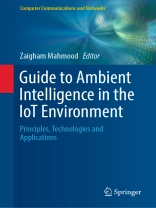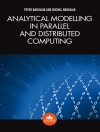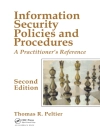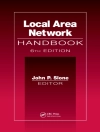Ambient intelligence (Am I) is an element of pervasive computing that brings smartness to living and business environments to make them more sensitive, adaptive, autonomous and personalized to human needs. It refers to intelligent interfaces that recognise human presence and preferences, and adjust smart environments to suit their immediate needs and requirements. The key factor is the presence of intelligence and decision-making capabilities in Io T environments. The underlying technologies include pervasive computing, ubiquitous communication, seamless connectivity of smart devices, sensor networks, artificial intelligence (AI), machine learning (ML) and context-aware human-computer interaction (HCI). Am I applications and scenarios include smart homes, autonomous self-driving vehicles, healthcare systems, smart roads, the industry sector, smart facilities management, the education sector, emergency services, and many more. The advantages of Am I in the Io T environment are extensive. However, as for any new technological paradigm, there are also many open issues and limitations.
This book discusses the Am I element of the Io T and the relevant principles, frameworks, and technologies in particular, as well as the benefits and inherent limitations. It reviews the state of the art of current developments relating to smart spaces and Am I-based Io T environments. Written by leading international researchers and practitioners, the majority of the contributions focus on device connectivity, pervasive computing and context modelling (including communication, security, interoperability, scalability, and adaptability). The book presents cutting-edge research, current trends, and case studies, as well as suggestions to further our understanding and the development and enhancement of the Am I-Io T vision.
Daftar Isi
Part I: Principles and Technologies.- Chapter 1. Ambient Intelligence in Smart City Environments: Topologies and Information Architectures.- Chapter 2. The State and Future of Ambient Intelligence in Industrial Io T Environments.- Chapter 3. Ambient Intelligence in Business Environments and the Internet of Things Transformation Guidelines.- Chapter 4. Runtime Adaptability of Ambient Intelligence Systems Based on Component-Oriented Approach.- Part II: Frameworks and Methodologies.- Chapter 5. Developing a WLAN-Based Intelligent Positioning System for Presence Detection with Limited Sensors.- Chapter 6. Need of Ambient Intelligence for Next Generation Connected and Autonomous Vehicles.- Chapter 7. Intelligent Control Systems for Carbon Monoxide Detection in Io T Environments.- Chapter 8. Io T Based Ambient Intelligence Microcontroller for Remote Temperature Monitoring.- Part III: Applications and Use Scenarios.- Chapter 9. Tax Services and Tax Service Providers’ Changing Roles in the Io T and Am I Environment.- Chapter 10. Ambient Intelligence in Systems to Support the Wellbeing of Drivers.- Chapter 11. A Vision Based Posture Monitoring System for the Elderly, Using Intelligent Fall Detection Technique.- Chapter 12. 21st Century Smart Facilities Management: Ambient Networking in Intelligent Office Buildings.
Tentang Penulis
Prof. Dr. Zaigham Mahmood is a Senior Technology Consultant at Debesis Education UK and a Professor at the Shijiazhuang Tiedao University in Hebei, China. He also holds positions as Foreign Professor at NUST and IIU in Islamabad, Pakistan. He previously served as a Reader (Associate Professor) at the University of Derby, UK, and Professor Extraordinaire at the North West University Potchefstroom, South Africa. His many publications include the Springer titles Fog Computing, Smart Cities, Connected Environments for the Internet of Things, Software Project Management for Distributed Computing, Requirements Engineering for Service and Cloud Computing, Connectivity Frameworks for Smart Devices, Data Science and Big Data Computing, Cloud Computing: Challenges, Limitations and R&D Solutions, Continued Rise of the Cloud, Cloud Computing: Methods and Practical Approaches, Software Engineering Frameworks for the Cloud Computing Paradigm, and Cloud Computing for Enterprise Architectures.












